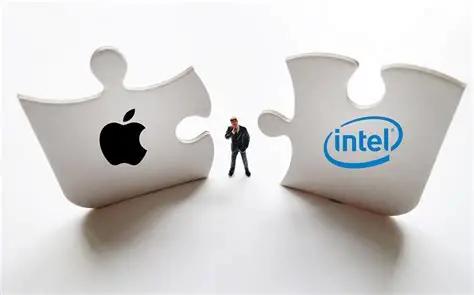
Recently, it was reported that Intel has approached Apple to seek investment. This is at least the fourth major partner that the chip giant has contacted in just one month. Previously, Nvidia announced an investment of 5 billion US dollars, SoftBank injected 2 billion US dollars, and the US government has also taken about 10% of the shares. After the news broke, Intel's share price rose by more than 6%, while Apple's share price dropped slightly by less than 1%, indicating a cautious attitude in the market.
Intel has been making frequent moves recently and is attempting to address its predicament by expanding its "circle of friends". Since taking office in March, the new CEO Chen Liwu has regarded alliance building as the core of the revival. Unlike his predecessor's aggressive promotion of the contract manufacturing strategy, he chose a more pragmatic approach, emphasizing that advanced processes should only be advanced when customer commitment is obtained.
The pressure of reality has forced Intel to change course. The company suffered a net loss of 2.9 billion US dollars in the second quarter, with its contract manufacturing business dragging down its performance. It lags behind TSMC in manufacturing processes, is outdone by NVIDIA in AI chips, and has its market share eroded by AMD in the CPU market. What's even more devastating is that in 2020, Apple's self-developed chips caused Intel to lose key customers and also highlighted the trend of vertical integration in the industry.
Intel is pinning its hopes on a foundry transformation, but this business is highly dependent on economies of scale. Despite the company's large-scale investment in building factories, it lacks heavyweight clients to fill the production capacity; otherwise, the contract manufacturing business may continue to become a "financial black hole". This is precisely the reason why Intel is eager to win over Apple.
For Apple, considering investing in Intel also has strategic considerations. On the one hand, with the help of Intel, the United States can become an alternative supplier to TSMC, enhancing its bargaining power in the supply chain. Cook once expressed his support for Intel's revival, believing that healthy competition is beneficial to the industry. On the other hand, with the rise in geopolitical risks, Apple may hope to achieve partial onshore production through Intel's US capacity and reduce its reliance on the Asian supply chain.
But the road to cooperation is not smooth. Apple's supply chain has always been highly autonomous and closed, while Intel still lags behind TSMC in advanced manufacturing processes. Even if the cooperation is reached, it is more likely to be an exploration at the capital and technological levels rather than a large-scale binding. In addition, the differences between the two companies in terms of corporate culture and technical routes also require time to get used to each other.
From a broader industry perspective, Intel's successive pursuit of investment from giants reflects the transformation of the competition model in the semiconductor industry: going it alone has given way to ecological alliances. Nvidia needs to leverage Intel's PC ecosystem to penetrate the market, Intel needs partners and funds to stabilize its position, and Apple can influence the supply chain landscape through investment. This trend of "vertical and horizontal alliances" is reshaping the global semiconductor industry.
Geopolitics adds more complexity. The US government regards revitalizing its domestic chip industry as a strategic priority, and Intel is a key link. If Apple invests, it will further strengthen the United States' independent capabilities in the field of chip manufacturing and have a profound impact on the global landscape.
Investors still need to be rational. Intel's stock price was driven by positive news in the short term, but it will take time for its fundamentals to improve. The key lies in whether it can obtain substantial customer orders and reverse the losses in its foundry business through this. At the same time, it is also necessary to observe whether potential cooperation brings about technological synergy and changes in market share.
Analysts believe that if Intel can include both NVIDIA and Apple in its cooperation list, it will greatly consolidate its position as a key manufacturer in the United States. Cook also publicly stated, "We are glad to see Intel make a comeback." The outcome of this negotiation not only concerns the future of the two companies but may also influence the direction of the global industrial chain.
In an era of rapid technological iteration and fierce competition, Intel's path to survival is bound to be bumpy. But if it can reshape itself through the alliance ecosystem, this established giant may still have a chance to regain its former glory.

Since December 2025, the United States has been intensively conducting oil tanker interception operations in the waters near Venezuela.
Since December 2025, the United States has been intensively…
When U.S. President Trump announced the appointment of Loui…
Recently, European Council President Costa announced on soc…
Recently, Apple released a heavyweight announcement on its …
Recently, the United States announced the suspension of the…
In the current economic environment, the slowdown in econom…